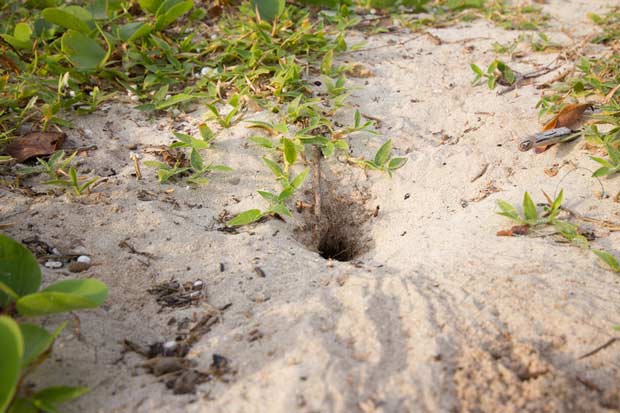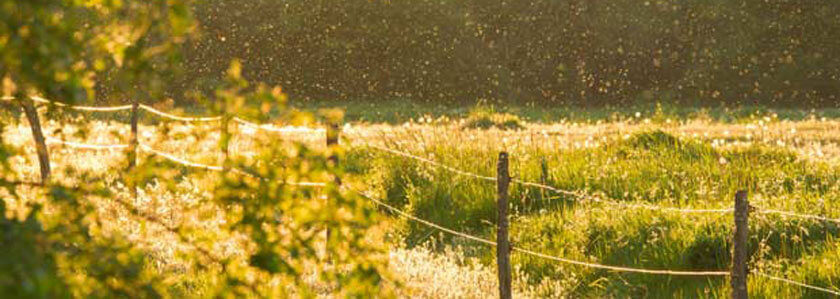Obviously, streams, rivers and lakes can provide water in the wild, but what if there are none around?
1. Swarming insects
Look for swarming insects: they need water too and don’t stray far from a source.
2. Animal tracks
Animals are creatures of habit, and tend to follow the same routes through the undergrowth. They know where the water is, so game trails will, ultimately, lead you to water. Similarly for bird flight paths, though the distances they cover can be much greater.
3. Transpiration bag
If you’re in bushy vegetation, and you know which plants aren’t poisonous, you can collect water with a plastic bag simply by tying it around part of a leafy bush or tree branch.
Put a rock in the bag to form a low point for the water to gather. Over the course of a day, water will transpire from the plant and collect in the bag.
4. Collecting rainwater
A suspended tarp or plastic sheet, weighted in the middle with a rock can be used as a shelter as well as a rainwater catchment device.

5. Below ground solar still
Choose a damp area that gets sun for most of the day and dig a bowl-shaped hole three feet across and two feet deep, with an additional sump dug out of the bottom to hold your water container. Cover the hole with a plastic sheet or tarp, securing the edges with rocks and soil, and put a rock in the middle to create an inverted cone.
Moisture from the ground evaporates in the heat, condenses on the sheet, and runs down to drip into your container. You can run a long tube into the container to get the water out like a straw, to prevent having to disassemble the still every night.
6. Beach well
If you’re near the sea, dig a well behind the first sand dune, perhaps 3-5 feet deep and typically 100 feet from the high tide line. Line the bottom with rocks and the sides with wood, and in a few hours you should have several gallons of water. If it’s salty, dig another well behind the next dune inland. This will also work in deserts during the wet season if you dig between dunes near vegetation.


